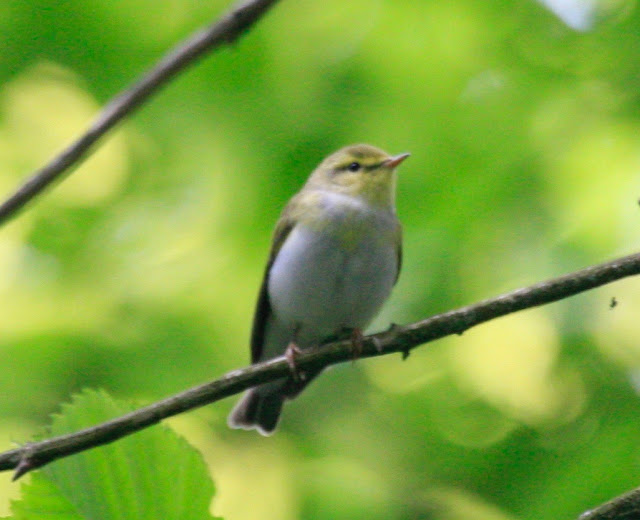Mike and Dave were in the car by not long after seven, and the Last of the Summer Wine Year-Listing trip to Norfolk was on.
We pitched up at Wells around 9;30ish and parked in a lay-by opposite the holiday camp just beyond the railway and walked down to a likely-looking wetland. We soon found the
Wood Sandpipers (168), as always the epitome of avian elegance, People soon started to arrive and a couple pointed out
Whinchat (169), freshly arrived and working their way along a fence.
Lesser Whitethroat - the first of many - sang,
Swallows swopped around, and distantly a
Spoonbill (170) flew east although David failed to pick this one up. also lots of
Avocets and a
Wigeon.
Then on to Burnham Overy for the
Purple Heron. As we were walking down to the crowd all looking determinedly into the marsh, David interrupted a long spiel about how he doesn't seem to pick up or see birds these days to point out a
Bittern (171) on a reed. We duly watched this for a while until it flew off and dropped into the reeds. We arrived at the crowd to find them annoyingly and frustratingly blasé about the Purple Heron. Yes over there somewhere, been showing well, not showing at the moment, will no doubt be out soon. We scanned for a while, got distracted by a couple of
Spoonbills very distantly circling, two
Marsh Harriers and a
Red Kite, and then it was out (172). Literally it climbed out of the ditch and wandered around. What a bird, even at a couple of hundred yards. All neck, and an enormous bill. Check out the photo at the top - yes its in there. David said it was like an Anhinga, and it was.
Duly relaxed we started looking around and had 3
Whimbrels in a field, a
Little Egret and a
Great White Egret, a
Grey Heron making 6 heron species including the Spoonbills. The mewing/cawing of
Mediterranean Gulls drew our attention, and then on the way out a pair of
Grey Partridges (173). We bumped into some birders determinedly heading down to the Heron. Was it around? Yes. Over there somewhere, been showing well, not showing at the moment, will no doubt be out soon.
On to Titchwell for some lunch. Mike thought he heard Turtle Dove purring briefly round the car park. We went on to the reserve proper - a few
Bearded Tits, lots more
Avocets, a few (hundred)
Brent Geese still, a single
Little Ringed Plover, another
Whimbrel, 19
Blackwits, a couple of
Grey Plovers, a few
Barwits and
Sanderling on the beach and then on the Tidal Pool two feeding
Spoonbills and nine
Turnstone. Med Gulls everywhere, calling all the time. We walked through the fen trail and got our first dragon of the year - a single
Large Red Damselfly, then 3 male
Red Crested Pochard (174) in very fine plumage pursuing a single female, and another Lesser Whitethroat flying around, Mike thought he herd that Dove again, and then in the centre someone saying they'd had Turtle Dove walking round the car park at 6am.
To finish, Snettisham. We parked at the beach car park and walked north toward Heacham. My first trip to this open scrub and reed habitat - impressive. There were lots of warblers, many
Whitethroat and several
Lesser Whitethroat including one doing a song flight - we had no idea this species did this. A coupe of
Willow Warblers and a
Sedge Warbler. Also my first
Speckled Wood and
Small Copper of the year. Then Mike found a single female
Wheatear, and a pair of
Stonechats clearly feeding young. We got to the end, scanned the field north - there more
Whimbrel and two more
Grey Partridge, then walked back along the dyke - hunting
Marsh Harrier being harried by
Lapwings and a
Red Kite, another
Spoonbill, our sixth for the day at four sites, and two more
Whimbrel bring the total to 9. Finally another pair of
Grey Partridge and we were done for the day, heading back home via our regular stop at Sainsbury's cafe in King's Lynn to go through the list.
Final total just over 90. Another splendid day in Norfolk - good weather, great birds, great company.


















